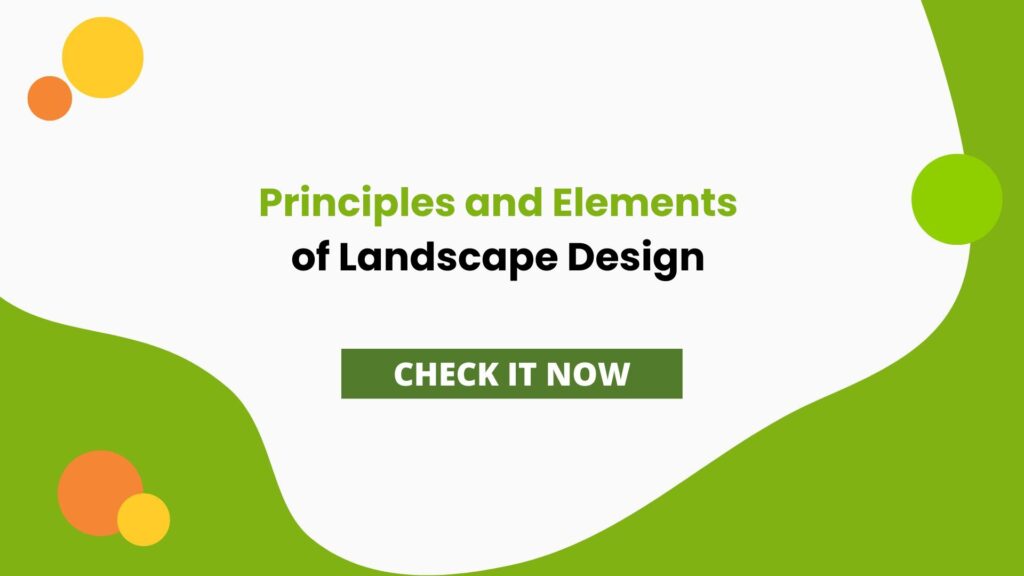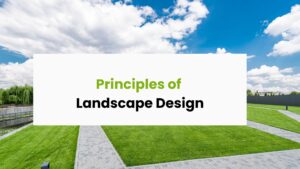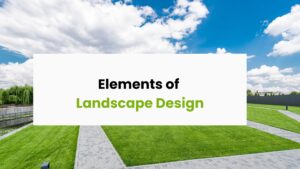Creating a beautiful and functional landscape goes beyond just planting a few trees and shrubs. It involves a thorough understanding of the principles and elements of landscape design. These foundational concepts help to guide the planning, design, and implementation of landscape projects, ensuring they are aesthetically pleasing, functional, and sustainable. In this blog post, we’ll explore the key principles and elements of landscape design to inspire your next outdoor project.
Table of Contents
TogglePrinciples and Elements of Landscape Design
Knowing the principles and elements of landscape design is essential for creating aesthetically pleasing, functional, and sustainable outdoor spaces. These concepts serve as the foundation for landscape architects, designers, and enthusiasts to transform ideas into reality, ensuring that every project not only meets visual expectations but also fulfills practical needs.
Principles of Landscape Design
- Unity
Unity in landscape design means that all the elements in the landscape work together to create a cohesive and harmonious look. This can be achieved through consistency and repetition of elements such as plants, colors, textures, and materials. When elements are repeated and arranged in a balanced manner, they provide a sense of oneness. - Balance
Balance refers to the equilibrium or symmetry in the arrangement of various elements in the landscape. There are two types of balance: symmetrical and asymmetrical. Symmetrical balance involves mirroring elements on either side of an axis, creating a formal, orderly appearance. Asymmetrical balance, on the other hand, uses different elements of equal visual weight to create a more informal, dynamic look. - Proportion
Proportion is the relationship between the sizes of different elements in the landscape. It’s important that all parts of the design relate well to each other and to the overall space. For example, large plants or structures should not overwhelm smaller elements, and vice versa. Proper proportion helps in creating a balanced and harmonious landscape. - Rhythm and Line
Rhythm in landscape design is created through the repetition of elements to lead the eye through the landscape. This can be achieved by using similar plants, colors, or textures at regular intervals. Line refers to the way the eye moves through the landscape, which can be guided by the shape and placement of plants, walkways, and borders. Curved lines create a more relaxed, natural feel, while straight lines suggest a more formal and structured environment. - Focalization
Also known as emphasis or focal points, focalization is about creating points of interest that draw the eye. This could be a statue, a beautiful tree, a water feature, or a piece of garden art. Focal points help to anchor the design and give it a clear center of attention. - Transition
Transition refers to the gradual change from one part of the landscape to another. This can be achieved through the use of gradual changes in plant height, color, texture, and spacing. Smooth transitions help to create a natural flow in the landscape, making it more visually appealing and comfortable to move through.
Elements of Landscape Design
Color
Color is a powerful element in landscape design, affecting mood and perception. Warm colors (reds, oranges, yellows) tend to create excitement and draw attention, while cool colors (blues, greens, purples) provide a sense of calm and relaxation. By carefully selecting and combining colors, you can influence the atmosphere of your landscape.
Form
Form refers to the shape of the plants and structures in your landscape. This could be the rounded shape of a shrub, the vertical lines of a tree, or the sprawling form of a ground cover. Different forms can be used to create visual interest and structure in your design.
Texture
Texture describes the surface quality of plants and materials. It can be coarse, medium, or fine. Using a variety of textures adds depth and contrast to your landscape. For example, pairing the smooth leaves of a hosta with the rough bark of a tree creates a pleasing contrast.
Scale
Scale is similar to proportion but focuses more on the size relationship between elements and the overall landscape. It’s important to consider the scale of your design elements to ensure they fit well within the space. For example, a large tree might look out of place in a small garden, while a tiny plant could be lost in a vast landscape.
Space
Space refers to the physical area that a landscape design occupies and how it is used. Effective use of space involves arranging elements in a way that makes the area functional and aesthetically pleasing. This includes considering how people will move through the space and how different areas will be used.
By understanding and applying these principles and elements of landscape design, you can create outdoor spaces that are not only beautiful but also functional and sustainable. Whether you are a homeowner looking to enhance your garden or a professional designer working on a large project, these guidelines will help you achieve a harmonious and well-planned landscape.
New Ideas for Your Landscape Design
- Native Plantings
Consider using native plants in your landscape. They are well-adapted to the local climate and soil conditions, require less maintenance, and support local wildlife. - Sustainable Practices
Incorporate sustainable practices such as rainwater harvesting, composting, and the use of permeable materials to reduce environmental impact. - Edible Landscaping
Combine beauty and functionality by integrating edible plants into your landscape. Herbs, vegetables, and fruit trees can provide fresh produce while enhancing the visual appeal of your garden. - Outdoor Living Spaces
Create outdoor living spaces such as patios, decks, and kitchens to extend your living area and provide a place to relax and entertain. - Water Features
Add water features like ponds, fountains, or waterfalls to create a calming atmosphere and attract wildlife.
Choose a Professional Landscaping Contractor In Abu Dhabi
Transform your outdoor space with expert landscape contractors in abu dhabi for landscape design services. Whether you’re looking to create a serene backyard oasis or a functional outdoor living area, our team is here to help. Contact us today for a consultation and let us bring your vision to life!



